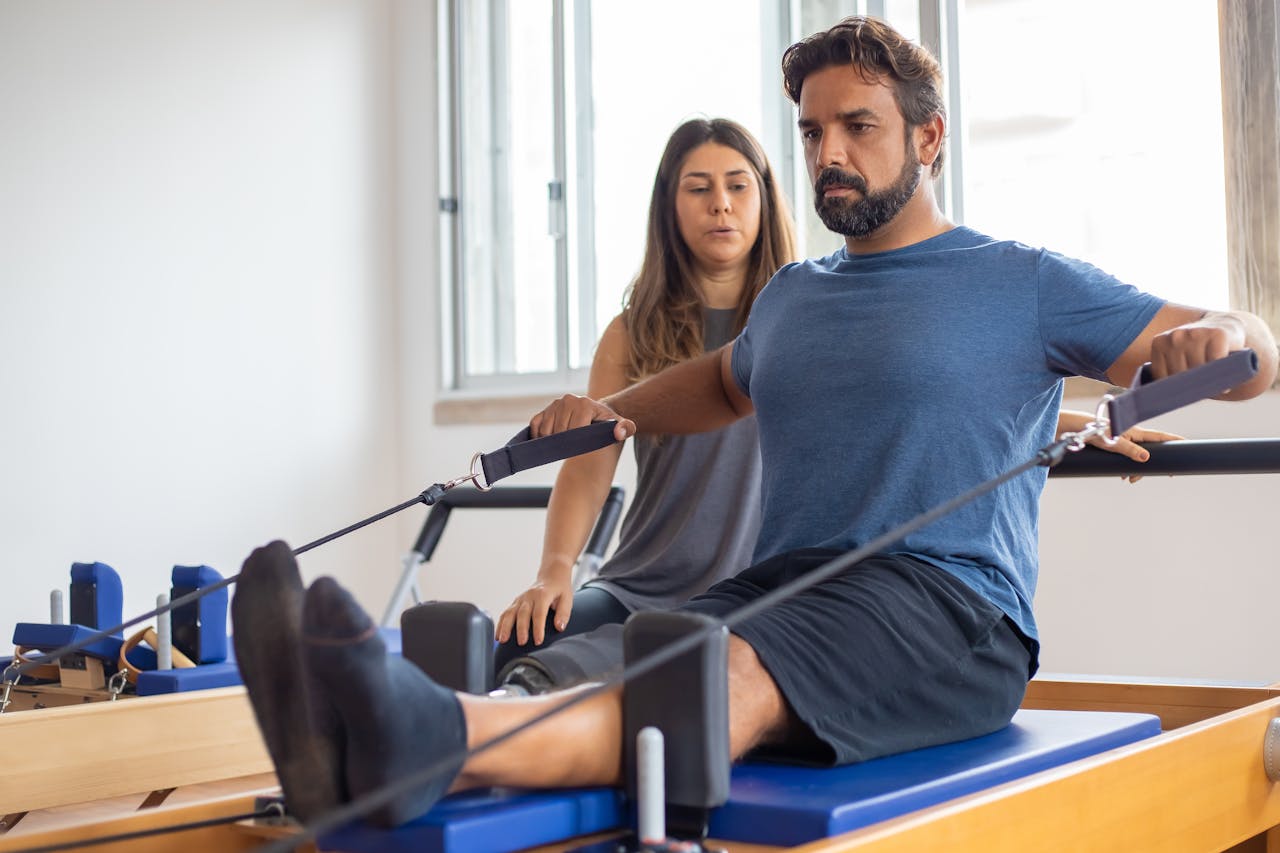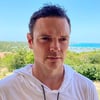
Table of Contents
Learn about Joseph Pilates, the creator of Pilates exercises, and explore how this fitness method has evolved.
Key Takeaways
- Joseph Pilates: Founder of the Pilates method, born in Germany in 1883.
- Early Life: Overcame childhood illnesses through physical training.
- Career: Worked as a circus performer and boxer, and taught fitness during WWI.
- Pilates Method: Developed "Contrology," focusing on core strength, spinal alignment, and breath awareness. Joseph Pilates wrote extensively about these principles.
- Pilates Studio: Opened a Pilates gym in New York City with his wife, Clara, in the 1920s, teaching mat exercises and other techniques.
- Pilates Exercises: Pilates exercises teach awareness of the deep and abdominal muscles and core muscles.
- Legacy: Pilates exercise remains popular worldwide, emphasizing holistic body and mind health.
Who is Joseph Pilates?
Joseph Pilates is the founder and visionary behind Pilates training.
Pilates is a German-born fitness guru who moved to the United States in the 1920s with his wife, Clara Pilates. Joseph and Clara Pilates founded the first Pilates studio in New York City.
Various disciplines, including dance, martial arts, yoga, gymnastics, and ballet, greatly influenced pilates training.
This holistic approach strongly emphasizes cultivating breath awareness, achieving optimal spinal alignment, and mastering core body movements.
"Physical fitness is the first requisite of happiness." - Joseph Pilates
History of the Joseph Pilates
While tracing the history of many types of exercise can often be a challenging endeavor, when it comes to Pilates, its origins are very well-documented.
The history of Pilates starts with its inventor, Joseph Hubertus Pilates (also known as Joe Pilates).
Joseph Pilates was born in Germany in 1883. His mother was a naturopath, and his father was a prize-winning Greek gymnast with a family gym. Both of his parents greatly influenced Joseph Pilates's later interest in therapeutic fitness.
As a young man, Joseph Pilates was a sickly child who suffered from rheumatic fever, rickets, and asthma.
His illness so impacted him that doctors told his parents he might not survive during childhood. However, Joseph Pilates displayed remarkable resilience and refused to surrender to his illness.
Joseph Pilates then dedicated himself to getting his body back in shape through physical training.
He took up several fitness regimens, including martial arts, bodybuilding, gymnastics, boxing, and yoga. He also went outside to exercise and focused on improving his breathing to better his asthma.
At 19, Joseph Pilates took his newfound fitness skills on the road. He began making a living as a circus performer and professional boxer in England.
During World War I, Joseph Pilates was interned in a British camp on the Isle of Man as a German national. There, he taught self-defense exercises, including wrestling, to fellow German internees.
Additionally, he helped wounded German soldiers recover from injuries through therapeutic exercises, using bed springs attached and removed from their beds to create makeshift resistance machines.
After World War I, Joseph Pilates returned to Germany to continue his work in physical fitness. He briefly served as a physical trainer for the Hamburg military police, concentrating on self-defense and other exercises.
Before World War II, Pilates immigrated to the United States, where he met Clara, his future wife, on the passenger ship that brought him to America.
In the 1920s, Joseph and Clara established a fitness studio in New York City, initially called Contrology, specializing in their innovative fitness approach.
Contrology, later known as "Pilates," emphasized core strength, spinal alignment, and breath awareness. Their studio gained widespread recognition in New York and provided training for individuals later known as the 'Pilates elders.' Joseph and Clara Pilates continued teaching Pilates together until the 1960s
Joseph Pilates authored two books that expounded his holistic approach to the body and mind.
At the heart of Joseph Pilates' philosophy was the concept of attaining perfect unity and coordination between the body, mind, and spirit.
What is Pilates?
Pilates is a training method that builds one’s core strength, flexibility, posture, and mind-body awareness through controlled movements and exercises.
Pilates is an excellent training method for achieving whole-body health and other benefits.
Pilates can be described as a workout for the body, mind, and spirit. It’s an excellent routine for many people— regardless of age, size, fitness level, or workout goals.
Pilates exercises can help with body conditioning, strengthening and toning the muscles, weight loss, improving flexibility, and more.
Pilates workouts can be catered to the individual's skill level and abilities. Many Pilates variations are also available, making it an excellent exercise practice for beginners.
The Six Essential Principles of Pilates
Pilates is composed of six essential principles which form the foundation of the Pilates practice:
- Breath
- Concentration
- Precision
- Flow
- Centering
- Control
Pilates Today
With its grace, strength, and therapeutic exercise teachings, Pilates grew quickly among famous figures, including movie stars, musicians, athletes, and others in the spotlight.
This inevitably helped the Pilates evolution throughout the U.S. and other countries. Fans heard their favorite celebrities used Pilates to achieve toned, beautiful bodies and optimal health.
Throughout the 90s and early 2000s, Pilates studios began to sprout up in major cities such as Chicago and Los Angeles. Most cities and even smaller towns now have Pilates studios. This is true throughout the world, not just in America.
Pilates continues to surge in popularity because its emphasis on core strength, corrective exercise, flexibility, and mind-body connection has resonated with people of all ages and fitness levels.
Many Pilates studios, classes, and online resources are available; individuals worldwide are embracing physical education with Pilates to improve their physical health, alleviate stress, and enhance overall well-being.
Frequently Asked Questions
Is Joseph "Joe" Pilates Still Alive?
No, Joseph Pilates died in New York on October 9, 1967. Joseph Pilates was 83 years old when he died. Joseph Pilates's death was due to advanced emphysema.
Can Anyone do Pilates?
Anyone can do Pilates unless otherwise instructed by a medical professional.
Different classes can be found, such as Pilates for seniors, Pilates for athletes, and Pilates for pre/post-natal. These classes can be found both in the studio and online.
The Pilates fitness method is for novices and serious athletes alike. An entry point can be found through Pilates classes with instructors that will help individuals begin at their own pace.
What Equipment is Used in Pilates?
Reformers are the most common pieces of equipment used in the Pilates method.
Other Pilates equipment and props include mats, balance cushions, core training balls, foam rollers, weighted balls, and resistance bands.
Does Pilates Help With Weight Loss?
Pilates can be used for weight loss and help maintain a healthy physique.
At the same time, remember that Pilates works best for toning muscles, aligning the spine, and improving whole body health and fitness.
Something like the Pilates Hundreds workout will likely make someone sweat the most. Still, the Pilates method is not a traditional form of cardio.
A healthy diet is also advised to be paired with the Pilates method to optimize results.
References
Does a Program of Pilates Improve Chronic Non-Specific Low Back Pain? in
Defining Pilates exercise: A systematic review - ScienceDirect
Pilates: What Is It? Should It Be Used in Rehabilitation? - Christine E. Di Lorenzo, 2011
Pilates: how does it work and who needs it? - PMC
Introduction to Pilates-Based Rehabilitation
The Pilates method: history and philosophy - Journal of Bodywork and Movement Therapies
Effects of Pilates Training on Lumbo-Pelvic Stability and Flexibility - PMC
Is Pilates as Good as Everyone Says? - The New York Times
A Pilates' Primer: The Millennium Edition: Return to Life Through Contrology and Your Health
Disclaimer
The contents of this article are provided for informational purposes only and are not intended to substitute for professional medical advice, diagnosis, or treatment. It is always recommended to consult with a qualified healthcare provider before making any health-related changes or if you have any questions or concerns about your health. Anahana is not liable for any errors, omissions, or consequences that may occur from using the information provided.

By: Clint Johnson
Clint is the driving force and founder of Anahana. Clint teaches Yoga, Pilates, mindful breathing, and meditation, catering to a global community of students and teachers.
